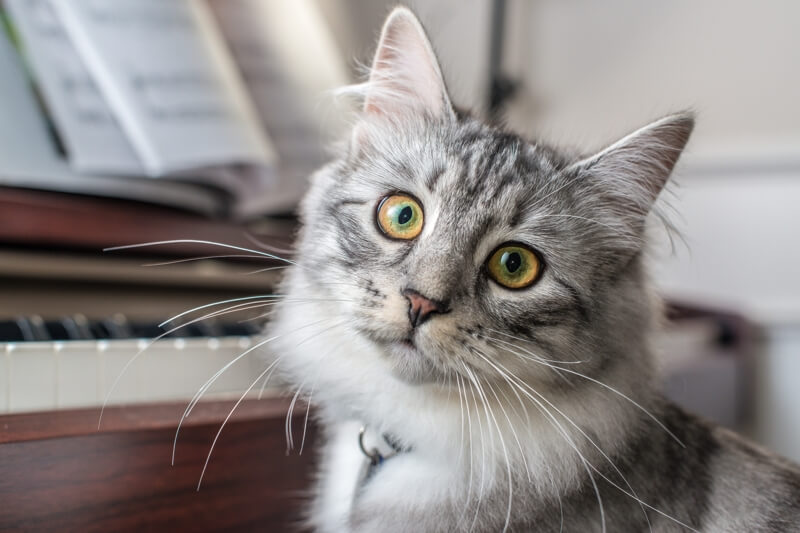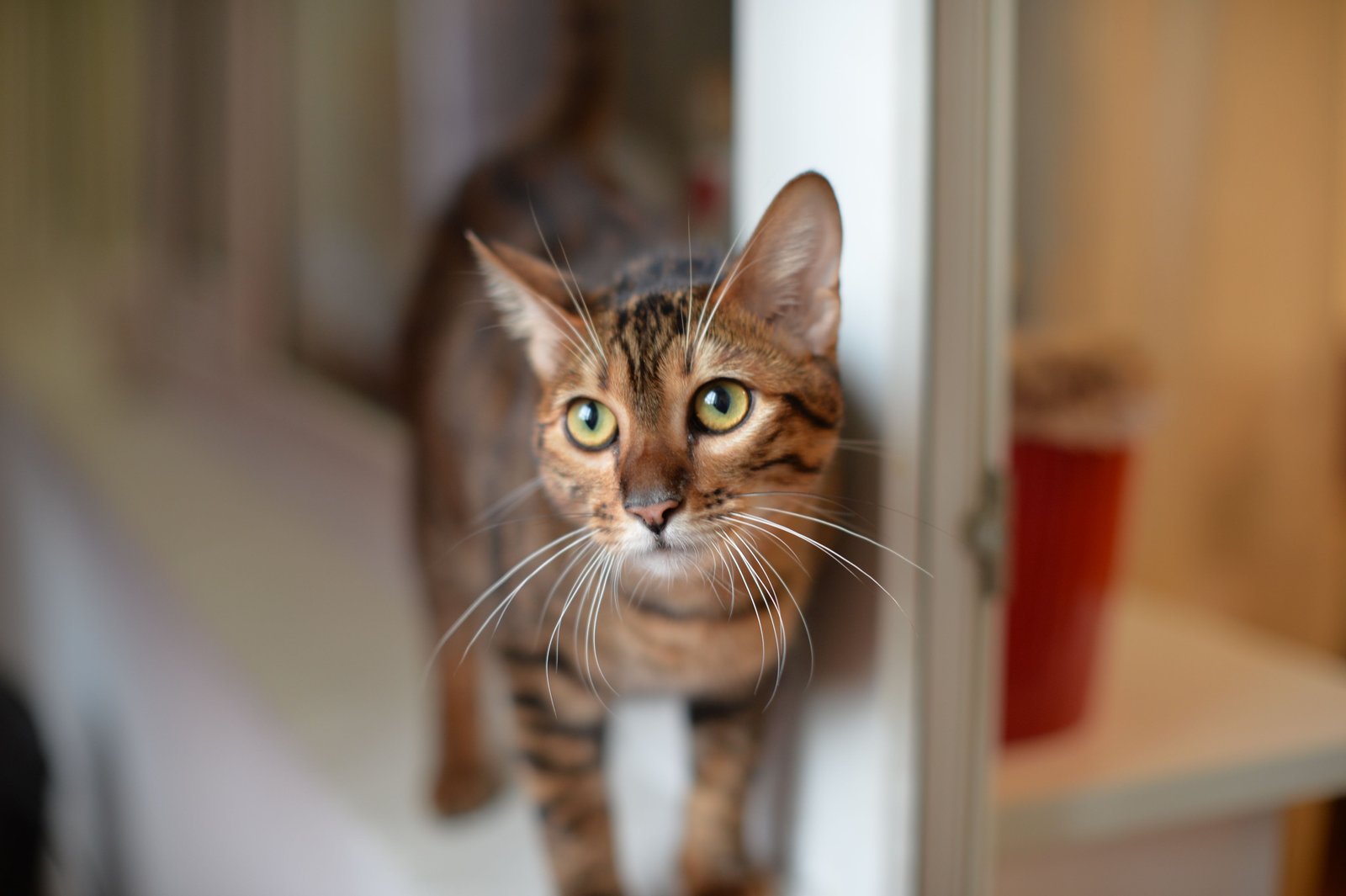The Javanese Cat is a long, slender and elegant feline with a fine, silky coat. It possesses a distinctive triangular head and large ears, closely related to the Siamese and Balinese breeds.
As an affectionate and intelligent breed, the Javanese Cat craves human companionship and thrives on interaction, making them ideal pets for families and individuals alike. Their playful nature often remains with them well into adulthood, ensuring they are always a source of entertainment.
Grooming a Javanese Cat is relatively simple due to their single coat that doesn’t mat easily, requiring only regular brushing to stay pristine. Known for their vocal tendencies, they are not shy about expressing their needs or opinions. An active lifestyle is crucial for this breed to keep their agile bodies healthy and their minds stimulated. Offering an enchanting blend of grace and sociability, the Javanese remains a popular choice for cat enthusiasts around the world.
Introduction To The Javanese Cat Breed
The Javanese cat, a long-haired beauty, is known for its graceful appearance and playful personality. This breed is a member of the Oriental family and shares many traits with its close relatives such as the Siamese and Balinese. Let’s explore the charming world of the Javanese cat.
Origins And Characteristic Traits
The Javanese cat originates from a blend of Siamese, Balinese, and Colorpoint Shorthair. It’s a breed crafted for those who adore the Siamese traits but prefer plusher coats. Notable for their intelligence and agility, Javanese cats are equipped with striking features and a friendly demeanor.
- Intelligent and agile
- Affectionate with a social nature
- Communicates with a distinct vocal tone
Physical Description And Behavior
The Javanese cat is a medium-sized feline with a svelte body, long tail, and wedge-shaped head. The coat is silky and comes in various colors and patterns. This cat’s striking blue eyes are one of its most captivating attributes.
In behavior, the Javanese shows a perfect balance between active play and calm affection. With a strong desire for human interaction, these cats integrate well into family life.
| Feature | Description |
|---|---|
| Size | Medium |
| Body Type | Svelte, muscular |
| Coat | Silky, medium-long |
| Eyes | Large, almond-shaped, blue |
Understanding The Javanese Cat’s Temperament
Javanese cats are known for their sociable and loving nature. They thrive on companionship—both human and feline. With a penchant for conversation, they will often chirp and talk to their owners. Above all, they enjoy engaging in interactive play. This breed is ideal for families seeking an interactive pet that forms strong bonds.
- Highly sociable and affectionate
- Enjoys interactive playtime
- Forms deep bonds with owners

Credit: www.aspcapetinsurance.com
Basic Care For Javanese Cats
The Javanese cat, an elegant and intelligent breed, requires particular attention to thrive. Providing optimal nutrition, regular exercise, and consistent grooming is key. This section delves into the essential care specifics for your Javanese feline.
Nutritional Needs Specific To The Breed
High-quality food is a must for the Javanese, as their energy levels are often high. Owners should focus on diets rich in proteins and fats. Here are the essentials:
- Lean meat like chicken or turkey
- Omega fatty acids for healthy skin and fur
- Avoid filler ingredients such as corn and soy
- Wet food to support hydration
- Consult a vet for individual dietary needs
Exercise And Play: Keeping Your Cat Active
Exercise is paramount for the Javanese cat’s physical and mental well-being. They adore interactive playtime. Consider these activity ideas:
- Feather wands stimulate natural hunting instincts
- Ball toys keep them chasing and leaping
- Climbing trees for exercise and perching
- Puzzle feeders engage their sharp minds
Grooming Essentials For Maintaining A Healthy Coat
Grooming a Javanese cat is less demanding than other long-haired breeds but remains essential. Simple steps for a lustrous coat include:
- Weekly brushing to remove loose fur and prevent mats
- Gentle shampoos only when necessary
- Regular ear checks and cleaning to prevent infection
- Trimming nails to protect your furniture and their paws
Health And Wellness For Javanese Cats
Caring for a Javanese cat requires understanding their specific health needs. These graceful cats are known for their intelligence and sociable nature, but they also face certain health challenges. Fostering their wellbeing involves regular care and vigilance. From genetic predispositions to the benefits of preventative care, let’s dive into what it takes to keep your Javanese cat thriving.
Common Health Issues In Javanese Cats
Javanese cats are generally healthy, but they have a predisposition to certain conditions. Awareness is key to management.
- Amyloidosis – A condition causing organ dysfunction.
- Lymphoma – A type of cancer affecting lymphocytes.
- Heart issues – Including heart murmurs and cardiomyopathy.
Vaccinations And Preventative Care Measures
Vaccinations are essential for preventing diseases. A robust preventative care routine is crucial.
| Age | Vaccine/Preventative Measure |
|---|---|
| 8-10 weeks | FVRCP #1 |
| 12-14 weeks | FVRCP #2, FeLV #1 (if risk is high) |
| 16-18 weeks | FVRCP #3, Rabies (as per local law) |
| Annually | Health check-up, vaccine boosters |
The Importance Of Regular Veterinary Check-ups
Regular veterinary visits ensure Javanese cats’ health is monitored. They allow for early detection and intervention.
- Yearly exams – To keep an eye on changes.
- Bloodwork – Helps to uncover hidden illnesses.
- Dental checks – Prevents tooth decay and gum disease.
:strip_icc()/javanese-cat-149289680-4fee3bd471bf473db718acffcb361c6a.jpg)
Credit: www.thesprucepets.com
Creating The Perfect Environment
Welcome to ‘Creating the Perfect Environment’ for your enchanting Javanese Cat. Crafting an ideal habitat is vital for their overall well-being. Let’s ensure your feline friend lives in comfort and joy.
Housing Needs: Indoor Vs. Outdoor Considerations
Your Javanese Cat needs the right home to thrive. Indoor environments are safer. Outdoor spaces can be exciting but risky. Let’s find the perfect balance.
- Indoors: Prevent accidents and extend their lifespan.
- Outdoors: Enclosed patios or catios offer secure exploration.
- Ensure access to shade, water, and a cozy retreat.
- Windows provide pleasant viewing and sunlight.
Safety Measures To Keep Your Cat Safe At Home
Guard your Javanese against common household hazards. Simple steps make your home a sanctuary.
| Area | Safety Tips |
|---|---|
| Kitchen | Secure cabinets, and keep toxic foods out of reach. |
| Living Areas | Hide electrical cords, and anchor heavy furniture. |
| Windows | Install sturdy screens to prevent falls. |
Don’t forget to update tags and microchip info for safety.
Social Interaction: Tips For A Stimulating Environment
Interaction keeps your Javanese Cat engaged and happy. Their social nature craves a stimulating environment.
- Variety of Toys: Rotate toys to maintain interest.
- Interactive Play: Schedule daily play sessions.
- Climbing Options: Tall cat trees satisfy climbing instincts.
Remember, companionship is key. Spend quality time with your cat. Consistent affection forms a strong bond.
Behavior And Training Insights
Welcome to the fascinating world of the Javanese Cat, a breed known for its engaging personality and striking appearance. Understanding these cats goes beyond their striking looks; diving into their behavior and how to train them unlocks the joy of living with a well-mannered feline companion. This section will explore how to manage their unique quirks, train them for positive behaviors, and handle any behavioral issues that may arise.
Understanding And Managing Your Javanese Cat’s Quirks
Javanese Cats are known to be highly social and intelligent, which translates into quirky behaviors that can both entertain and challenge their owners. Here are some insights:
- They love to ‘talk’ to their human friends in a melodious voice.
- Curiosity can lead them into mischief; safe, stimulating environments are key.
- They form strong bonds and might follow you around the house.
Managing these actions involves creating engaging routines and interactive play sessions. Ensure they have plenty of toys and a cat tree for climbing.
Training Techniques For Positive Behaviors
Positive reinforcement is the cornerstone of training Javanese Cats. Keep these methods in mind:
- Use rewards like treats or affection to encourage good habits.
- Short, consistent training sessions yield the best results.
- Teach simple commands like ‘sit’ or ‘stay’ to foster discipline.
Remember, patience and consistency turn lessons into lifelong behaviors.
Dealing With Common Behavioral Issues
Behavioral issues can arise even in the most well-behaved Javanese Cats. Address these common issues promptly:
- Scratching furniture: Provide scratching posts and discourage unwanted scratching gently.
- Excessive meowing: Check for discomfort or stress, and create a tranquil home environment.
- Aggression: Identify triggers and remove them, and never punish aggressively.
If issues persist, consult with a vet or a professional cat behaviorist.

Credit: www.aspcapetinsurance.com
Advanced Care And Aging
As our beloved Javanese cats grow older, their needs change. Advanced care becomes crucial for maintaining their health and happiness. Planning for their senior years is vital. Our feline friends deserve the best care as they age. Let’s explore the special attention required for senior Javanese cats. Learn how to adapt your care routines. And understand the support needed for their end-of-life journey.
Special Considerations For Senior Javanese Cats
Senior Javanese cats often need extra love and attention. These elegant felines may face age-related issues. These can include arthritis, dental disease, or vision loss. It’s important to stay on top of vet visits. This ensures your cat receives the best care for its age. Regular check-ups can help detect problems early. This makes treatment easier and less stressful.
- Dietary adjustments may be necessary. Older cats need food that’s easy to digest. It should support joint health, too.
- Comfortable bedding helps to ease joint pain. Padded beds are great for senior Javanese cats.
- Keep their environment stress-free and peaceful. Regular routines keep older cats happy.
Adapting Care Routines As Your Cat Ages
As Javanese cats age, their daily routine needs changes. Adapt to make life easier and more comforting for your aging pet.
| Area of Care | Adaptation for Aging Cats |
|---|---|
| Grooming | More frequent grooming may help prevent matting. It keeps the coat healthy. |
| Activity | Encourage gentle play to keep muscles strong. Avoid harsh activities. |
| Accessibility | Ramps or steps can help your cat reach its favorite spots easily. |
Monitor behavior for any changes. This helps you adapt to your cat’s evolving needs.
End-of-life Care And Support
The final stage of your Javanese cat’s life is sensitive. Quality of life is key during this time. Pain management and comfort are top priorities. Work closely with your vet. They can guide you through this difficult period. They provide medical and emotional support.
Palliative care options may include:
- Medications to ease pain and improve comfort.
- Special feeding strategies if they have trouble eating.
- Creating a serene and accessible living space.
Remember, your love and presence mean the world to your senior cat. Spend quality time with them. Offer them gentle affection. This care and support make their golden years as smooth as possible.
Frequently Asked Questions On Javanese Cat
What Is A Javanese Cat?
Javanese cats are a type of Oriental feline, recognized for their long, slender bodies, wedge-shaped heads, and playful personalities. They have silky, medium-length coats and are known for their active and vocal nature.
How Long Do Javanese Cats Live?
Javanese cats typically enjoy a lifespan of 12 to 15 years. Proper care, a healthy diet, and regular veterinary check-ups can contribute to a longer, healthier life for these cats.
Are Javanese Cats Hypoallergenic?
No cat is truly hypoallergenic, but Javanese cats are often considered to be among the breeds that may cause fewer allergic reactions. Their medium-length coats produce less dander than many other breeds.
What Colors Do Javanese Cats Come In?
Javanese cats can come in a variety of colors, including red, cream, tortoiseshell, and various shades of lynx (tabby) point. Their striking point coloration enhances their elegant appearance.
Conclusion
Embracing the charm of the Javanese cat is easy. They’re affectionate, intelligent, and a joy to have around. With their striking features and playful nature, they make perfect companions for cat lovers. Remember their grooming needs and cherish every moment.
Make a Javanese cat part of your life, and experience their loving presence.












